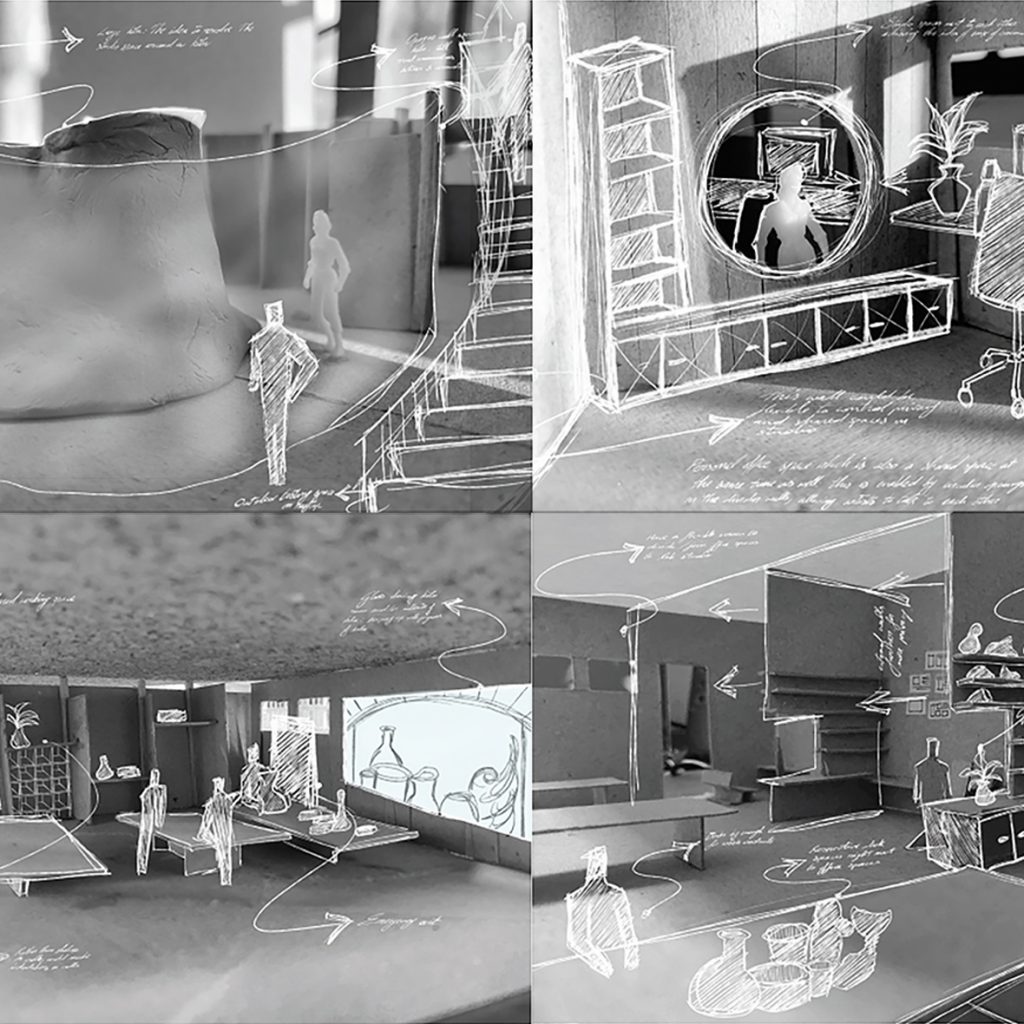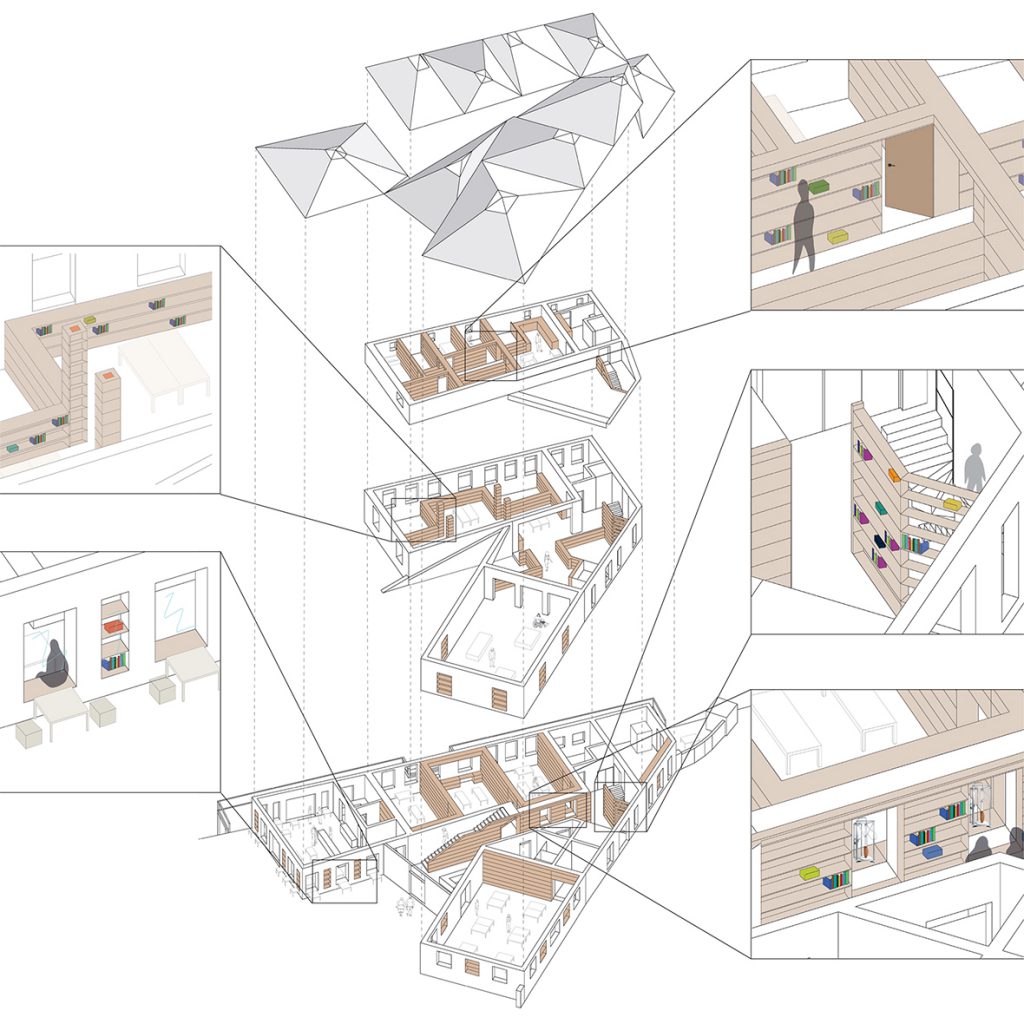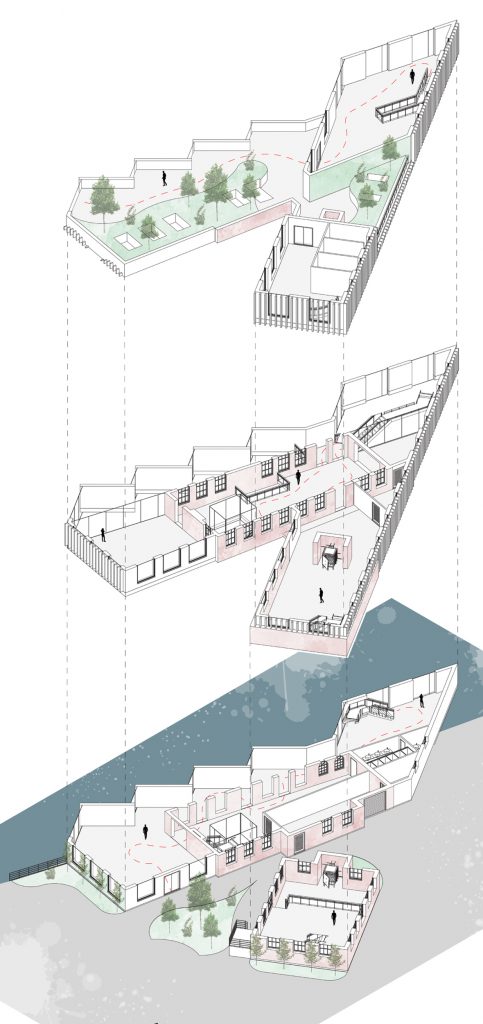SPRING-SUMMER STUDIO
The Brickworks
A centre for ceramics
AA2DS4 Skills in Architectural Design 2
The fourth in the series of design modules extends to a broader consideration of architecture as a cultural and societal activator. This year the brief was to design a new Centre for Ceramics through the repurposing of two currently disused 1900s industrial buildings towards the East End of Reading town centre. Known as the Brickworks, the new centre was to act as both an artist residency for ceramic artists, whilst also having a wider public outreach through exhibitions and education. The centre investigates new ways of researching/working/making with ceramics, whilst referencing Reading’s lesser known industrial heritage of clay pits, brick and tilemaking.
The project aimed at establishing a conceptual, theoretical and methodological ground for creating, researching, curating and debating art. The nature of authorship in ceramics was investigated, between individual one-off pieces with imperfections of the maker, to replicatable modular constructs. Through a series of actions, the project allowed students to question and explore the relationship between old and the new, the agency of space and objects, and the sensory atmosphere and experience of occupying a space for the production and communication of social knowledge through art.
Sited on the outskirts of town, the proposal was to have a strong public outreach, forming links with local residents, and the wider context of Reading. To this end, the project included an additional studio for use by local art organisations such as Jelly, a charity fostering public engagement in the visual arts. As the site itself has historic industrial significance, the project challenged students to respond to this heritage responsibly whilst looking to the future of Reading as a cultural centre for the arts.
Module Convenor: John Harding
Design Studio Team: Carolina Vasilikou, Izabela Wieczorek, Stephen Gage, Sam Brown
Visitors: Sayan Skandarajah, Lorraine Farrelly, Oliver Froome-Lewis, Laura Maftei, Sabine Hogenhout (Hutchinson and Partners), Peter John Corbett (Corbett and Tasker), Richard Nunes, Martin Lydon (Haworth Tompkins), Jennifer Forakis (Studio HoOP), Steven Clarke (Napier Clarke), Matthew Jones (Birmingham School of Architecture), Sue Munday (Sue Munday Ceramics), Agata Ślusarek (ACG Architects), Ross Atherton (ACG), Marty Schroder (ACG), Suzanne Stallard (Jelly), Jo Alexander-Jones (Berkshire Local History Association), Brendan Carr (Reading Museum), Guan Lee (Grymsdyke Farm), H.G.Matthews Brickworks.
The fourth in the series of design modules extends to a broader consideration of architecture as a cultural and societal activator. This year the brief was to design a new Centre for Ceramics through the repurposing of two currently disused 1900s industrial buildings towards the East End of Reading town centre. Known as the Brickworks, the new centre was to act as both an artist residency for ceramic artists, whilst also having a wider public outreach through exhibitions and education. The centre investigates new ways of researching/working/making with ceramics, whilst referencing Reading’s lesser known industrial heritage of clay pits, brick and tilemaking.
The project aimed at establishing a conceptual, theoretical and methodological ground for creating, researching, curating and debating art. The nature of authorship in ceramics was investigated, between individual one-off pieces with imperfections of the maker, to replicatable modular constructs. Through a series of actions, the project allowed students to question and explore the relationship between old and the new, the agency of space and objects, and the sensory atmosphere and experience of occupying a space for the production and communication of social knowledge through art.
Sited on the outskirts of town, the proposal was to have a strong public outreach, forming links with local residents, and the wider context of Reading. To this end, the project included an additional studio for use by local art organisations such as Jelly, a charity fostering public engagement in the visual arts. As the site itself has historic industrial significance, the project challenged students to respond to this heritage responsibly whilst looking to the future of Reading as a cultural centre for the arts.
Module Convenor: John Harding
Design Studio Team: Carolina Vasilikou, Izabela Wieczorek, Stephen Gage, Sam Brown
Visitors: Sayan Skandarajah, Lorraine Farrelly, Oliver Froome-Lewis, Laura Maftei, Sabine Hogenhout (Hutchinson and Partners), Peter John Corbett (Corbett and Tasker), Richard Nunes, Martin Lydon (Haworth Tompkins), Jennifer Forakis (Studio HoOP), Steven Clarke (Napier Clarke), Matthew Jones (Birmingham School of Architecture), Sue Munday (Sue Munday Ceramics), Agata Ślusarek (ACG Architects), Ross Atherton (ACG), Marty Schroder (ACG), Suzanne Stallard (Jelly), Jo Alexander-Jones (Berkshire Local History Association), Brendan Carr (Reading Museum), Guan Lee (Grymsdyke Farm), H.G.Matthews Brickworks.























